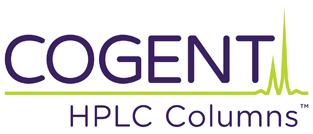The Limit of Detection (LOD) can be defined as the concentration corresponding to a signal-to-noise ratio of 3:1
Therefore, there are only two things you can do to improve detection limits in your HPLC method:
- Increase the signal
- decrease the noise.
There are a number of ways to increase the signal in HPLC methods. If the detection is by UV, make sure you are operating at the optimal UV wavelength (lambda max) of the analyte. In the case of a separation of multiple compounds, a compromise may have to be made in selecting a UV wavelength suitable for all the analytes. Some LC systems allow for the monitoring of multiple wavelengths at a time or will allow a change in wavelength as part of the run method. As for column-related aspects, the only thing you can really do is improve the efficiency of the peak. Of course, the detection is not really a function of the column but an improved efficiency will mean a sharper peak of greater height.
For amines, 0.1% formic acid is often a good choice for the mobile phase additive in order to reduce tailing. If you are not using LC-MS, 0.1% TFA can also give very good peak shapes for amine-containing analytes as well. Use of a sharp gradient can often yield a sharper peak than in isocratic mode alone. Also, the Diamond Hydride™ column with an Aqueous Normal Phase ANP method is often the most preferable for hydrophilic analytes. The peak shapes obtained are often significantly better than RP (Reversed Phase), thus improving your limits of detection. Furthermore, the mobile phase additives used in an ANP LC-MS method will “pre-ionize” the analytes, which increases the analyte signal.
Decreasing the noise floor can be done in several ways as well. With LC-MS methods, when you use ANP instead of RP, the LCMS friendly mobile phases used are more volatile than RP mobile phases and therefore lower the noise. In UV methods, you should consider the UV-absorption characteristics of your mobile phase. One of several reasons why acetonitrile is widely used as the organic mobile phase component is it does not have significant UV absorbance above ~190nm. Acetone, in contrast, absorbs significantly in the typical UV range of most HPLC methods and is not often suitable for this reason. UV absorbance characteristics of any mobile phase additives should also be considered as well, since these can also increase the noise floor.


